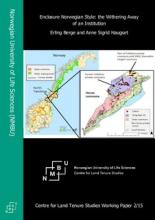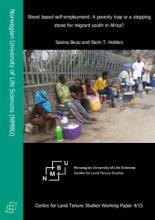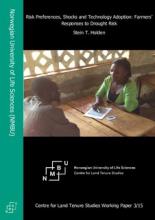Land Library Search
Through our robust search engine, you can search for any item of the over 73,000 highly curated resources in the Land Library.
If you would like to find an overview of what is possible, feel free to peruse the Search Guide.
/ library resources
Showing items 1 through 9 of 9.Land rental markets can potentially improve the access to land for land-poor households that possess complementary resources that can enable them to utilize land efficiently.
Population growth leads to growing land scarcity and landlessness in poor agrarian economies. Many of these also face severe climate risks that may increase in the future.
More than 200 years after the King sold one of the “King’s commons” of Follafoss (located inthe current Verran municipality) to urban timber merchants, local people in some ways still behave as if the area is a kind of commons.
A significant percentage of youth in urban Africa is employed in the informal sector. The
informal sector is more accessible than the formal sector for people with low human and
financial capital, such as youth migrants from rural areas. But the sector is also generally
Climate risk represents an increasing threat to poor and vulnerable farmers in drought-proneareas of Africa. This study assesses the maize and fertilizer adoption responses of food insecure farmers in Malawi, where Drought Tolerant (DT) maize was recently introduced.
This is a desk appraisal of the Alliances for Religions and Conservations (ARC) done for the Norwegian Agency for Development Cooperation (Norad) by the Department of International Environment and Development Studies, Noragric, at the Norwegian University of Life Sciences (NMBU).
This paper looks at the role of market imperfections in explaining leasing behaviour of households using sample data from the Highlands of Eritrea.
The paper tests two theoretical models that explain land productivity differentials between owner-tenants, owner-operators and owner-landlords, and between plots of land operated under different tenancy contracts by owner-tenants.The owner-tenants were richer in non-land resources than owner-oper





